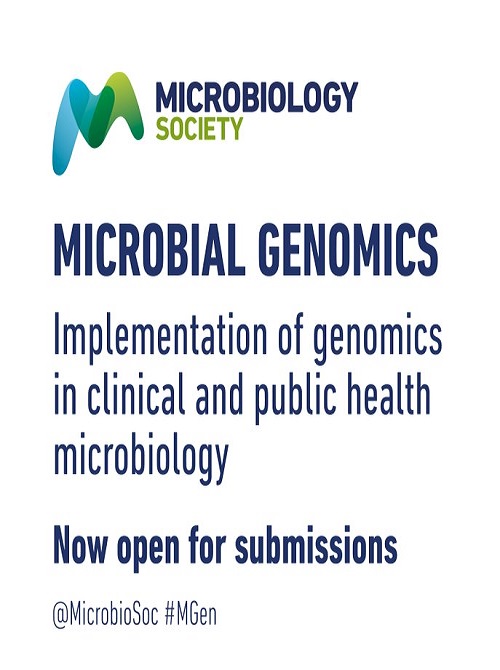在对白色念珠菌和近亲进行系统发生组分析时发现的模式表明,白色念珠菌/黄孢菌支系酵母菌具有广泛的环境灵活性
IF 4
2区 生物学
Q1 GENETICS & HEREDITY
引用次数: 0
摘要
真菌病原体通常来源于生活在自然环境中的良性或非致病性菌株。最近出现的人类病原体--白色念珠菌(Candida auris)就是真菌的一个例子,据信它起源于环境,最近才进入临床。然而,迄今为止,关于该菌种在自然环境中的起源以及何时开始与人类产生联系的证据还很有限。克服这一缺陷的方法之一是重建(1)从临床和非临床环境中分离出来的菌株之间的系统发育关系,以及(2)已知会导致人类疾病的物种和良性环境微生物之间的系统发育关系。C. auris 属于念珠菌/黄孢菌支系,该支系由 45 种酵母菌组成,包括人类病原体和环境有杀菌剂。我们对念珠菌/黄孢菌支系进行了系统进化分析,旨在了解环境和临床分离的酵母菌的生态广度和进化关系。为了建立一个稳健的框架来研究这些关系,我们开发了一个包含 108 个分离菌株的全基因组序列数据集,这些分离菌株代表了 18 个物种,其中包括 4 个新测序的物种和 18 个环境分离菌株。我们的系统发生基于 619 个直向同源基因,显示出环境隔离的物种和菌株与临床隔离的对应物种和菌株相互交错,这表明该支系在人类和自然环境之间发生过多次转变。我们的研究结果突显了这些酵母菌栖息环境的广泛性,并暗示该支系中许多临床分离的酵母菌很容易生活在人体之外的各种自然环境中,反之亦然。本文章由计算机程序翻译,如有差异,请以英文原文为准。
Patterns recovered in phylogenomic analysis of Candida auris and close relatives implicate broad environmental flexibility in Candida/Clavispora clade yeasts
Fungal pathogens commonly originate from benign or non-pathogenic strains living in the natural environment. The recently emerged human pathogen, Candida auris, is one example of a fungus believed to have originated in the environment and recently transitioned into a clinical setting. To date, however, there is limited evidence about the origins of this species in the natural environment and when it began associating with humans. One approach to overcome this gap is to reconstruct phylogenetic relationships between (1) strains isolated from clinical and non-clinical environments and (2) between species known to cause disease in humans and benign environmental saprobes. C. auris belongs to the Candida/Clavispora clade, a diverse group of 45 yeast species including human pathogens and environmental saprobes. We present a phylogenomic analysis of the Candida/Clavispora clade aimed at understanding the ecological breadth and evolutionary relationships between an expanded sample of environmentally and clinically isolated yeasts. To build a robust framework for investigating these relationships, we developed a whole-genome sequence dataset of 108 isolates representing 18 species, including four newly sequenced species and 18 environmentally isolated strains. Our phylogeny, based on 619 orthologous genes, shows environmentally isolated species and strains interspersed with clinically isolated counterparts, suggesting that there have been many transitions between humans and the natural environment in this clade. Our findings highlight the breadth of environments these yeasts inhabit and imply that many clinically isolated yeasts in this clade could just as easily live outside the human body in diverse natural environments and vice versa.
求助全文
通过发布文献求助,成功后即可免费获取论文全文。
去求助
来源期刊

Microbial Genomics
Medicine-Epidemiology
CiteScore
6.60
自引率
2.60%
发文量
153
审稿时长
12 weeks
期刊介绍:
Microbial Genomics (MGen) is a fully open access, mandatory open data and peer-reviewed journal publishing high-profile original research on archaea, bacteria, microbial eukaryotes and viruses.
 求助内容:
求助内容: 应助结果提醒方式:
应助结果提醒方式:


